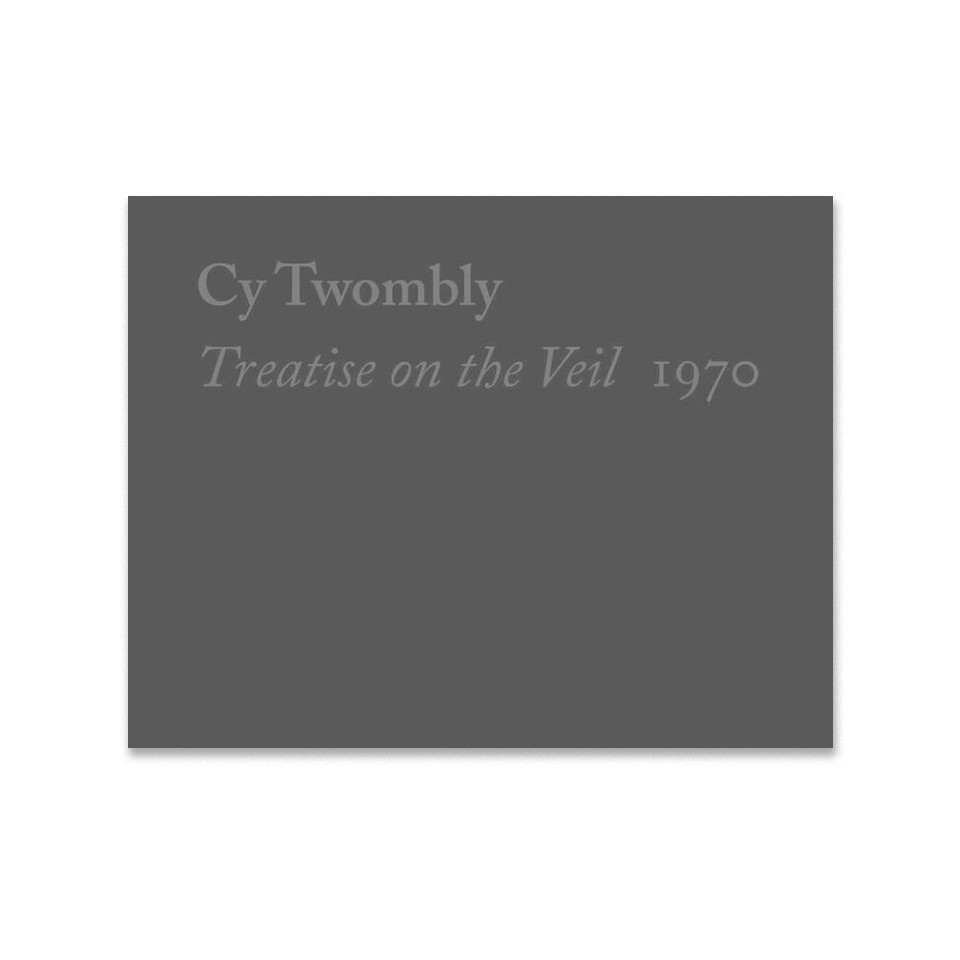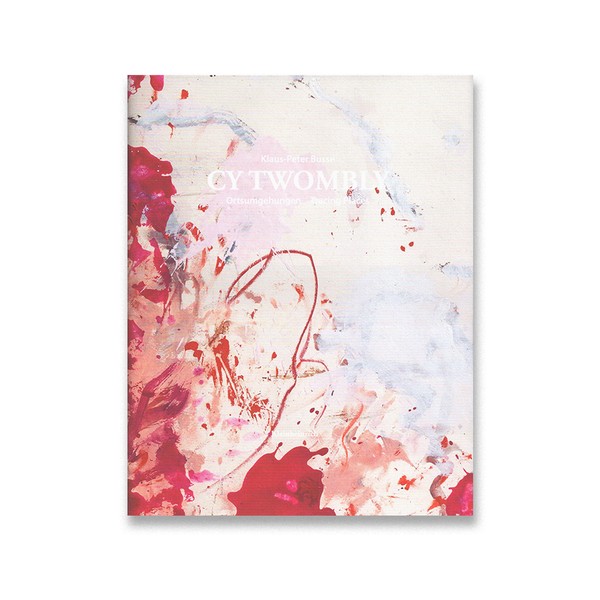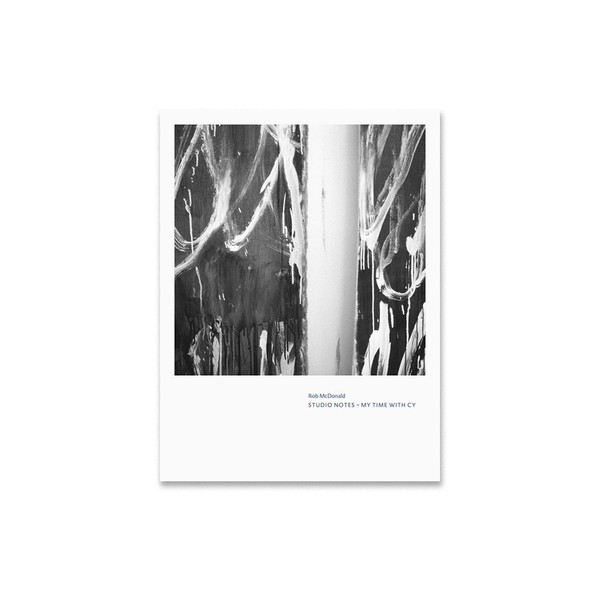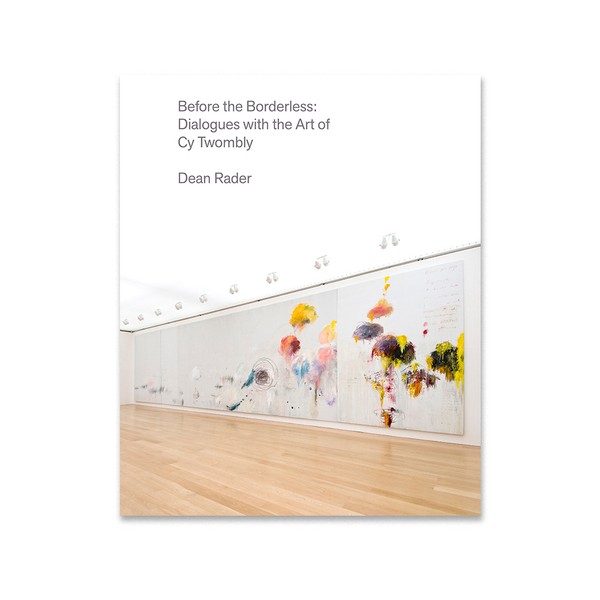Cy Twombly
Treatise on the Veil 1970
Essays by Michelle White, Isabelle Dervaux, and Sarah Rothenberg

This volume, published by the Menil Collection, Houston, includes three essays: “Interstices of Time: Cy Twombly’s Treatise on the Veil,” Isabelle Dervaux; “In and Out of Time: Cy Twombly’s Treatise Works, 1968–1970,” Michelle White; and “Ripping the Veil: Cy Twombly’s Treatise and the Music of Pierre Henry,” Sarah Rothenberg. It also includes an exhibition history for Treatise on the Veil (1970) and a selected bibliography. The volume is richly illustrated with high-resolution reproductions of minute details.
Dervaux’s essay situates Treatise on the Veil relative to Minimalism and specifically to Donald Judd. She discusses his use of stamps vis-à-vis signatures as well as numerical sequences, framing both as emphasizing “the irregularity and arbitrariness of the process” (12). She also considers the etymology and associations of “treatise” and “veil,” and considers recurrences elsewhere in his practice, including Veil of Orpheus (1968) and collages completed on Captiva Island. She also contextualizes Treatise on the Veil in relation to Rainer Maria Rilke’s Sonnets to Orpheus and Duino Elegies, considering spatiotemporal intersections in the poetry and the paintings, and in relation to Pierre Henry’s Le Voile d’Orphée (The Veil of Orpheus), introducing a sonic dimension. Dervaux extends this discussion to John Cage and Morton Feldman, emphasizing the formal qualities of avant-garde scores.
White offers an extended formal analysis of Treatise on the Veil (Second Version) (1970), emphasizing the “ideas of presence and action” (39). She frames the linear marks as anti-illusory horizon lines and atemporal “time lines”, arguing against understanding the work as a landscape or set of chronological intervals. Situating this painting within the larger “Treatise group,” White reads them as a “coy prodding of Minimalism’s self-referential tendencies” (45). She situates these works alongside Veil of Orpheus and Say Goodbye, Catullus, to the Shores of Asia Minor (1994), as well as external references such as Eadweard Muybridge’s photography. Discussion of submerged elements such as a magazine photograph of a bride may be useful for those seeking to track iconography. She also draws brief theoretical connections to George Kubler’s The Shape of Time: Remarks on the History of Things (1962).
Rothenberg focuses her inquiry on the preparatory studies, considering the relationship between “casualness” and “grandeur” (71). She frames the artist’s writing as formal rather than contentual and as an ambivalent marker of the artist’s presence, or lack thereof. She offers a detailed consideration of Pierre Henry’s Le Voile d’Orphée, noting that Twombly first encountered the composer in the 1950s. Following a thorough history of the musical composition and its reception, Rothenberg draws out connections between the musician and Rilke and interrogates the significance of the veil in the score and the artworks. She also meditates on relays between formal and sonic qualities.
This volume is indispensable for those researching the series, and likely of interest for those researching Twombly’s practice in the 1970s or his gray-ground works more broadly. For more on Orpheus and Rilke, see Mary Jacobus’s Reading Cy Twombly: Poetry in Paint (2016). See also Nicholas Cullinan, “Fade to Gray: Treatise on the Veil,” in Cy Twombly: Cycles and Seasons, ed. Nicholas Serota (2008).
(Publication description by Jamie Danis)
Cy Twombly. Treatise on the Veil 1970. Essays by Michelle White, Isabelle Dervaux, and Sarah Rothenberg. Published by The Menil Collection, Houston, 2019. Distributed by Yale University Press. 90 pages, fully illustrated.



